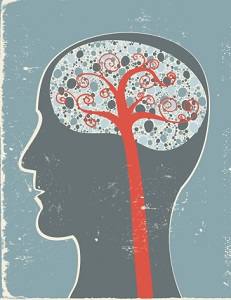If you are looking for a unique and effective way to address mental health issues, Hakomi therapy may be the right choice for you. Hakomi is a mindfulness-based approach that can help you understand the root causes of your problems and work through them in a safe and supportive environment. In this blog post, we will discuss what Hakomi therapy is, how it works, and who can benefit from it.
Contents
What Is Hakomi Therapy?
 Hakomi therapy is a type of body-centered psychotherapy. It is considered to be both experiential and somatic. The word “Hakomi” comes from a Hopi Indian word meaning “to observe.” The therapist observes the client’s nonverbal communication, which includes posture, facial expressions, and body language. The therapist also uses touch as a way to help the client connect with his or her own body and emotions.
Hakomi therapy is a type of body-centered psychotherapy. It is considered to be both experiential and somatic. The word “Hakomi” comes from a Hopi Indian word meaning “to observe.” The therapist observes the client’s nonverbal communication, which includes posture, facial expressions, and body language. The therapist also uses touch as a way to help the client connect with his or her own body and emotions.
Hakomi therapy is based on the belief that we all have an inherent wisdom that can be accessed through our bodies. This wisdom is often hidden by our defenses, which are formed in response to early childhood experiences. The therapist’s role is to help the client access this wisdom so that he or she can make more conscious choices and create a more fulfilling life.
Hakomi therapy is a relatively short-term form of therapy, with most clients only needing between six and twelve sessions. This is due to the fact that Hakomi therapy focuses on helping the client make radical changes in a short period of time. It is an intensive form of therapy, but it is also very effective.
Development Of Hakomi Therapy?
The development of this therapy began in the 1970s by Ron Kurtz. He was influenced by Eastern philosophies, particularly Taoism and Zen Buddhism (Kurtz, 1987). These philosophies emphasize mindfulness, which is a central component of Hakomi Therapy.
Kurtz was also influenced by Gestalt Therapy, which focuses on here-and-now experience and awareness (Perls, 1969). Hakomi Therapy combines these various influences to create a unique and effective form of therapy.
In the year 1977, Kurtz presented a paper on Hakomi Therapy at the American Psychological Association conference. This was the first time that Hakomi Therapy was introduced to the psychology community (Kurtz, 1987). Since then, it has been gaining popularity as a unique and effective form of therapy. There are now Hakomi Institutes in various countries around the world.
Five Principles Of Hakomi Therapy
 There are five principles of Hakomi Therapy that make it such a unique and effective way to address mental health issues. These principles are:
There are five principles of Hakomi Therapy that make it such a unique and effective way to address mental health issues. These principles are:
Nonviolence
This is the first and most important principle of Hakomi Therapy. It is based on the belief that all people have basic goodness and are worthy of respect. This means that no one should be hurt, either physically or emotionally. Moreover, it is important to be gentle with ourselves and others.
Mindfulness
It is based on the Buddhist concept of mindfulness, which is the practice of being present in the moment. And paying attention to what is happening around you without judgment. Mindfulness is a key element in Hakomi Therapy as it allows us to be aware of our thoughts, feelings, and actions. Even so, it is not necessary to be a Buddhist to benefit from Hakomi Therapy.
Universality
This principle recognizes that we all share certain basic needs and experiences. This includes things like love, belonging, and safety. The idea is that we can all relate to one another, regardless of our differences. It basically focuses on our common humanity and the unity of all beings.
Organicity
This principle recognizes that we are all interconnected. And that we are constantly changing and evolving. This means that change is natural and should be welcomed. The goal is to help us grow in a healthy way, both physically and emotionally. Organicity is mainly related to the concept of mindfulness.
Body Wisdom
Body wisdom is the principle that our bodies hold wisdom. This means that our physical sensations can provide us with valuable information about our thoughts and emotions. It is based on the belief that the body and mind are connected. And that we can heal ourselves by working with the body as well as the mind.
These five principles work together to create a safe and supportive environment. And through that people can explore their thoughts, feelings, and behaviors. This exploration can lead to insights and healing. The therapy is useful to treat a wide range of mental health issues. And it can be adapted to meet the needs of each individual.
How Does Hakomi Therapy Works?
 There are a few things that make Hakomi therapy unique. The session of this therapy works in a proper sequence which is; contact, assessing, processing and integration.
There are a few things that make Hakomi therapy unique. The session of this therapy works in a proper sequence which is; contact, assessing, processing and integration.
The first step is to make contact with the patient and help them feel comfortable. It involves building rapport and making a connection with the patient. In this, the therapist first tries to make a comfortable conversation with the patient and make them feel relaxed.
The second step is to assess the patient. In this, the therapist will try to understand what are the issues that the patient is facing. This will help the therapist to know how to address these issues in a proper way. It is also known as the “here and now” part of the therapy.
The third step is processing. In this, the therapist will help the patient to process their emotions in a proper way. This will help the patient to understand their emotions better and also help them to cope with their emotions in a better way.
The fourth and last step is integration. The therapist, here, will help the patient to integrate their emotions into their everyday life. This will help the patient to feel more balanced and peaceful in their life. In simple words, this step will help the patient to apply what they have learned in the therapy to their everyday life.
What Are The Benefits of Hakomi Therapy?
There are many benefits of Hakomi therapy. Some of the major benefits are mentioned below;
Helps in Reducing Stress and Anxiety
Hakomi therapy can help in reducing stress and anxiety. It does so by providing a safe and supportive environment in which patients can explore their thoughts and feelings. This exploration can help patients to understand and cope with their stressors in a more effective way.
Improves Communication Skills
Hakomi therapy can also help to improve communication skills. This is because the therapist will encourage patients to express their thoughts and feelings openly. In addition, the therapist will also provide feedback to the patient in order to help them improve their communication skills.
Enhances Self-Esteem
Hakomi therapy can also enhance self-esteem. This is because the therapist will help patients to develop a greater understanding of themselves. In addition, the therapist will also help patients to develop a more positive view of themselves.
Maintains Privacy
Hakomi therapy also maintains privacy. This is because the therapist will only share information with the patient that is necessary for treatment. In addition, the therapist will not share any information with third parties without the patient’s consent.
These benefits show that Hakomi therapy can be an effective way to address mental health issues. If you are struggling with a mental health issue, then you should consider seeking out Hakomi therapy.
What Are The Limitations Of Hakomi Therapy?
 While this therapy is based on a number of different philosophies, it is not without its limitations.
While this therapy is based on a number of different philosophies, it is not without its limitations.
One of the main issues with this therapy is that it can be quite slow-moving. This is because therapists need to build trust with their patients and help them to feel comfortable before they can start exploring deeper issues.
This method can also cause patients to feel quite vulnerable, as they are often asked to share personal details about their lives. Hakomi therapy can also be quite costly, as it usually requires weekly sessions with a trained therapist.
Hakomi could also impact the original defense mechanisms of the patient and make them feel more vulnerable to outside threats. It is also not recommended for some patients with a history of trauma.
Hakomi therapy can help patients to explore their thoughts and feelings in a safe and non-judgmental environment. This type of therapy can be particularly helpful for those who have experienced trauma or abuse. However, it is important to be aware of the limitations of this therapy before starting treatment.
Conclusion
To conclude, Hakomi therapy is a unique and effective way to address mental health issues. It is a powerful tool that can help individuals heal from their past, present, and future selves. If you are struggling with mental health issues, I encourage you to seek out a Hakomi therapist near you.
Also, for more information about Hakomi therapy, please visit the website of Therapy Mantra. You will find a wealth of information about this exciting and life-changing therapy. I hope you have found this article helpful. If so, please share it with others who might benefit from it. Thank you for reading!
A Word From Therapy Mantra
Your mental health — Your psychological, emotional, and social well-being — has an impact on every aspect of your life. Positive mental health essentially allows you to effectively deal with life’s everyday challenges.
At TherapyMantra, we have a team of therapists who provide affordable online therapy to assist you with issues such as depression, anxiety, stress, workplace Issues, addiction, relationship, OCD, LGBTQ, and PTSD. You can book a free therapy or download our free Android or iOS app.


